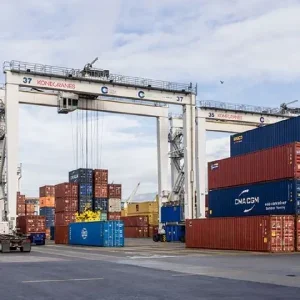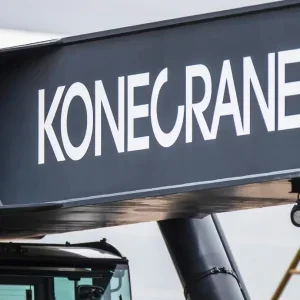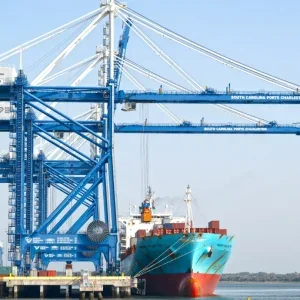According to the manufacturer, the weather station’s lifting points were proof tested to ensure the greatest load that can be applied without straining them beyond the elastic limit.
Safe lifting
This guaranteed the weather station could be safely lifted and transported to the DONG Energy and FLiDAR offshore wind measurement campaign, which is located in the Irish Sea.
Larkin Eng Services was tasked with the need tp proof load test the weather station that weighed a total of 6.5t. This ensuring that the station was balanced when deployed by sea, a goal acheived by calculating the safe working load, so it could be lifted safely by the lifting points.
Elsewhere, an additional 25% of the total weight was added to the buoy by adding heavy chains to ensure the working load was safe to lift.
Larkin built a structure to enable the lifting of the equipment from dockside onto a boat while the buoy was then lifted by crane off the boat and also before being lowered into the water.
Straightpoint’s technology recorded all the individual test weights, from the individual components, to the overall finished product, as well as the total including the additional test weights.
Accurate readouts
Each individual weighed component was totalled and then compared against the total weight reading, which ensured the accuracy of the readouts from Straightpoint’s Handheld Plus system, which links directly to the loadcell.
John Dodgson, senior rigging and inspection engineer at Larkin Engineering Services explains: "I have used Straightpoint’s products for many years. With over 1 million GBP-worth of equipment being lifted in this project, we had to get it right first time.
"That’s why we chose Straightpoint, as we knew we could rely on the accuracy of their loadcell to safely monitor the load."
Test measurements
He added: "The FLiDAR equipment consists of a marine buoy equipped with a state-of-the-art buoy-adapted Leosphere WinddubeV2 FLiDAR held in a passive mechanical stabilisation system. The Straightpoint loadcell was used to take load test measurements on the lifting points on Flidar.
"I used Straightpoint’s Handheld Plus to take measurements of the marine buoy and the windcube. Once FLiDAR was assembled, the loadcell’s peak load function was used to record the total load, so that calculation could be set for the proof loads to be applied. Finally the peak load function recorded the total proof load applied to the single lifting point. The digital readout is always photographed and forms part of the proof loading tests’ certification documentation."
Elsewhere, Straightpoint recently launched the latest iteration of its wireless tension loadcell, Radiolink Plus.
The new product, which was showcased at this year’s LiftEx event in London, features a new chassis and circuitry.
Practical usage
In addition it features a streamlined form, which achieves IP67 protection, which is claimed to make the loadcell more practical than previous versions.
The battery section of the Radiolink Plus also features reverse polarity protection that shields the cell from damage if the batteries are inserted the wrong way around, while the square corners of the loadcell have also been replaced by a new design.
This revamp is said to give the product greater ability to move in a clevis, which is widely used within marine, rigging, automotive, aircraft, offshore and construction industries.






